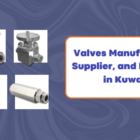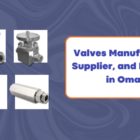What Are Instrumentation Valves and How Do They Work?
What Are Instrumentation Valves and How Do They Work
Instrumentation Valves are critical components in modern industrial applications, ensuring precision, safety, and efficiency in controlling the flow of fluids and gases. At Mcneil Instruments, we specialize in manufacturing high-quality valves that cater to diverse industries. In this blog, we delve into the types of instrumentation valves we offer, their unique properties, and applications to help you make informed decisions for your projects.
Mcneil Instrument is a leading manufacturer, supplier, and exporter of high-quality Instrumentation Valves in India. Our valves are designed to meet the stringent demands of various industries, ensuring precise control and reliable performance.
What Are Instrumentation Valves?
Instrumentation valves are precision-engineered devices used to regulate, isolate, or control the flow of liquids or gases in pipelines. These valves are crucial for maintaining system performance and safety in industries like oil & gas, pharmaceuticals, and chemical processing.
How Do Instrumentation Valves Work?
Instrumentation valves are precision devices designed to control the flow of fluids in various industrial processes. Here’s a simplified breakdown of their working principle:
- Valve Body: The valve body houses the internal components and provides a structural framework. It’s typically made of materials like stainless steel or brass to ensure durability and corrosion resistance.
- Valve Stem: A movable component that controls the flow of fluid. It can be rotated or lifted to open or close the valve.
- Valve Plug or Disc: This component, often shaped like a ball or a disk, blocks or allows the passage of fluid.
- Valve Seat: The valve seat is a precisely machined surface against which the valve plug or disc seals, preventing leakage.
- Actuator (Optional): An actuator, such as a pneumatic or electric actuator, can be used to automate the valve’s operation.
How it Works:
- Opening the Valve: By rotating the valve stem or activating the actuator, the valve plug or disc is lifted or rotated, creating an opening for fluid flow.
- Closing the Valve: To close the valve, the stem is rotated or the actuator is activated in the opposite direction, causing the plug or disc to seat against the valve seat, blocking the flow of fluid.
The precise design and operation of instrumentation valves vary depending on the specific type, such as ball valves, gate valves, globe valves, and needle valves. Each type has its own unique characteristics and is suited for different applications.
Types of Instrumentation Valves by Mcneil Instruments
Below, we provide an overview of the key instrumentation valves we manufacture, highlighting their features and applications:
- Manifold Valves: Manifold valves integrate multiple valves into a single body, streamlining installation and saving space. They are widely used in instrumentation systems for controlling fluid and gas flow, particularly in industries like oil and gas, petrochemicals, and power generation.
- Needle Valves: Needle valves provide precise flow control through a tapered, needle-like plunger. Ideal for calibration and fine adjustments, they are essential in chemical processing, instrumentation systems, and laboratory applications requiring exact regulation.
- Ball Valves: Ball valves use a spherical disc to control flow, offering quick shutoff and reliable sealing. Common in pipelines, water treatment, and chemical processing, they are valued for their durability and suitability for high-pressure and high-temperature environments.
- Check Valves: Check valves ensure unidirectional flow and prevent backflow in piping systems. They are critical for protecting equipment in water management, oil and gas, and power plants, automatically closing to maintain system integrity when flow reverses.
- Globe Valves: Globe valves adjust flow using a movable disc and stationary seat, making them ideal for throttling and precise control. Frequently used in cooling water, fuel oil, and turbine lube oil systems, they provide efficient regulation and easy maintenance.
- Gate Instrumentation Valves: Gate valves control flow by lifting a gate out of the fluid path, ensuring minimal resistance when fully open. They are best for applications requiring straight-line flow with low pressure drop, such as water distribution and wastewater systems.
- Stainless Steel Instrumentation Valves:
- 316 Stainless Steel Valves: Known for their excellent corrosion resistance, these valves are ideal for use in harsh environments.
- 304 Stainless Steel Valves: Versatile and cost-effective, these valves are suitable for a wide range of applications.
- 904L Stainless Steel Ball Valves: Offer superior resistance to chloride-ion stress corrosion cracking, making them ideal for marine environments.
- High-Performance Alloy Valves:
- Incoloy 800 Valves: Highly resistant to oxidation and carburization, these valves are suitable for high-temperature applications.
- Incoloy 825 Valves: Offer excellent resistance to a wide range of corrosive environments, including acid and chloride solutions.
- Hastelloy C276 Valves: Provide exceptional resistance to a wide range of corrosive media, including oxidizing and reducing acids.
- 254 SMO Valves: Offer excellent resistance to pitting and crevice corrosion, making them ideal for marine and chemical processing applications.
- Specialty Valves:
- 3-Way L Port Ball Valves: These valves provide versatile flow control options, allowing for multiple flow paths.
- Cw617n Brass Ball Valves: These valves offer excellent corrosion resistance and are suitable for a wide range of applications.
Why Material Matters in Instrumentation Valves
The choice of material for instrumentation valves is critical as it affects performance, durability, and cost. Common materials include:
| Material | Key Features |
| Stainless Steel | Corrosion resistance, durability in harsh conditions. |
| Brass | Cost-effective, excellent for low-pressure environments. |
| Incoloy & Hastelloy | Exceptional resistance to high temperatures and chemicals. |
| 254 SMO | Superior chloride resistance for marine applications. |
Applications of Instrumentation Valves
Instrumentation valves are versatile and find applications across various industries:
- Oil & Gas: For regulating high-pressure pipelines and preventing leaks.
- Chemical Processing: To handle corrosive fluids and gases efficiently.
- Pharmaceuticals: For precise fluid control in sterile environments.
- Water Treatment: To ensure seamless flow regulation in filtration systems.
Uses of Industrial Valves
| Valve Type | Use/Industry |
| Manifold Valve | Instrumentation Systems |
| Needle Valve | Chemical Processing, Instrumentation |
| Ball Valve | Oil and Gas Pipelines, Chemical Processing |
| Check Valve | Water Management, Power Plants |
| Globe Valve | Cooling Water Systems, Fuel Oil Systems |
| Gate Valve | Water Distribution, Wastewater Treatment |
| Stainless Steel 316 Valves Instrumentation | Corrosive Environments, High-Temperature Systems |
| Stainless Steel 304 Instrumentation Valves | General Industrial Applications, Food Processing |
| Stainless Steel 904L Ball Valves | Acidic and Corrosive Fluid Handling |
| ASTM B564 UNS N08800 Incoloy 800 Valves | High-Temperature Applications, Heat Exchangers |
| Incoloy 825 Instrumentation Ball Valves | Chemical Processing, Acidic Environments |
| Hastelloy C276 Ball Valves | Harsh Chemical and Corrosive Environments |
| 254 SMO Instrumentation Valves | Seawater Applications, Pulp and Paper Industry |
| Stainless Steel 3 Way L Port Ball Valve | Multi-Flow Control, Diversion Applications |
| Cw617n Brass Ball Valve | Low-Pressure Applications, Plumbing Systems |
How to Choose the Right Instrumentation Valve
When selecting instrumentation valves, consider the following:
- Material Compatibility: Ensure the valve material suits the application environment.
- Pressure and Temperature Ratings: Match the valve specifications with system requirements.
- Flow Control Needs: Opt for multi-way valves like 3-way designs for complex systems.
- Cost vs. Performance: Balance affordability with functionality based on your industry needs.
Packing And Documentation of Valves Fitting
At Mcneil Instruments, we supply valve fittings along with all the necessary documentation, including a commercial invoice, packing list, test reports, HS code, certificate of origin from the chamber of commerce, fumigation certificate, warranty letter, and base material certificates. Each batch of valve fittings comes with a material test certificate that details the chemical and mechanical properties, ensuring that the fittings meet the specifications outlined in the purchase order.
We also accommodate third-party inspections by agencies nominated by our customers to guarantee that our valve fittings meet their specific requirements. Additionally, we offer a free sample kit of valve fittings to all clients for quality approval, which can be provided upon receipt of a purchase order copy. Request your free sample kit today!
Conclusion
Instrumentation valves are essential for ensuring safety, efficiency, and precision in industrial applications. At Mcneil Instruments, we take pride in offering a diverse range of high-quality valves that meet international standards. Whether you need Stainless Steel 316 Valves for marine applications or Hastelloy C276 Ball Valves for chemical handling, our solutions are tailored to your needs.
For more details on our products and services, contact Mcneil Instruments your trusted partner for instrumentation valves manufacturers in India.
Why Choose Mcneil Instruments?
As one of the leading instrumentation valves manufacturers in India, we offer a wide range of valves built with robust materials and advanced engineering. Our products meet international standards, ensuring reliability and durability.
At Mcneil Instruments, we are dedicated to exceeding customer expectations every time. Our commitment to sophisticated innovation, quality, design, and process techniques ensures unmatched reliability in our products. Recognizing the critical role our products play in industrial operations, we offer unparalleled services in efficiency and dependability. Reach out to Mcneil Instruments today to discover more or procure the best products for your industry!








